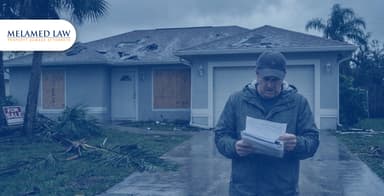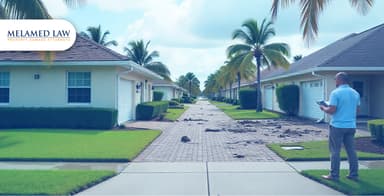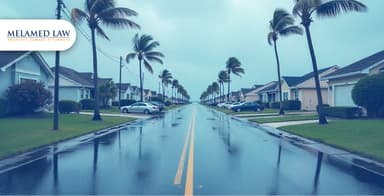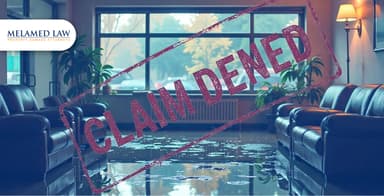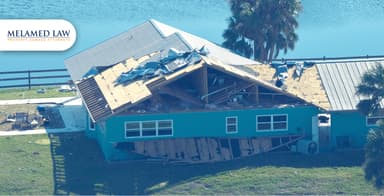
How Do I Respond To A Wrongly Denied Insurance Claim For Water Damage? Do Insurance Companies Have Dispute Resolution Systems?
When the unexpected happens, we help individuals and businesses collect the money they deserve for their insurance claims.
October 7, 2025
How Do I Respond To A Wrongly Denied Insurance Claim For Water Damage? Do Insurance Companies Have Dispute Resolution Systems?

When the water first seeped across the living room floor, it felt like a small disaster that could be fixed. A plumber was called, towels were laid down, receipts were saved. You did everything you thought a responsible homeowner should do. Weeks later, the real shock arrived, not from the broken pipe, but from your insurance company, a flat letter declaring that your water damage claim was denied.
For many homeowners, this denial is only the start of a long, draining process. The pressing question remains: what do you do if your claim is wrongfully denied, and where do you go from there?
1. Why Insurance Companies Say No to Water Damage Claims
Insurance companies decline water damage claims for a number of causes, many of which feel unfair because they reflect confusion more than clarity. Below are the most common objections, along with why denial letters often sound vague.
Excluded causes
Standard homeowner policies often include fine print exclusions, damage from floods (water coming in from outside after a storm), earth movement, or long term seepage.
Your burst pipe may be covered, however moisture creeping through a foundation over years often is not. For example, most policies distinguish between “sudden and accidental” water damage and “gradual damage,” which insurers expect you to maintain.
Maintenance issues and gradual deterioration
Insurers often deny claims when damage seems to result from neglect rather than a discrete event. Leaky pipes you knew about, ignored roof flashing, or gutters that overflow regularly are red flags. The logic is, if homeowners had fixed these before they worsened, the insurer would not be liable.Late reporting or delayed notification
When damage is not reported promptly, insurers claim the delay prevented them from investigating properly, or that additional damage occurred because you did not act.
For example, mold or rot that spreads after the initial leak may worsen the loss, and insurers will say that you allowed the harm to worsen. Many policies have clauses requiring immediate notice, and this helps them verify cause and limit further damage.
Insufficient proof or documentation
If photos are blurry, if there are no time stamped receipts, or if you cannot show exactly what caused the damage, insurers use that lack to deny or offer only partial payment. Without contractor estimates, professional inspections, or service records, your claim may feel unsubstantiated in their eyes.
Here’s why denial letters often feel vague or confusing
Insurers may mention “maintenance” or “wear and tear” without clear definitions, leaving uncertainty about whether the damage was avoidable.
References to “your policy” or “coverage” are often generic and may not identify the exact clause affecting your claim.
Letters may acknowledge damage occurred but deny responsibility by disputing the cause, even if the event was sudden.
Multiple reasons for denial may be listed without indicating which is decisive, leaving you unsure where to focus your appeal.
Although frustrating, the reasons behind a denial reveal what you need most, solid evidence, clear knowledge of your policy, and a strategy that limits the insurer’s escape. The next section shows the first steps to take and how to build a record they cannot dismiss.
2. The First Steps You Need to Take After a Denial

Being told “no” by your insurer feels overwhelming, however the moments following denial are when you still hold power. What you do first can shape whether your appeal succeeds or stalls. Here are steps you can take now, with empathy however clear purpose:
Stop further damage, preserve what remains
Once you have received a denial notice, take action to prevent additional harm. Dry wet areas, ventilate damp spaces, maintain ambient temperature, repair minor leaks if safe, and secure loose structures.
Even if you pay out of pocket for minor work, you protect your claim’s integrity and avoid arguments that you “let damage get worse.”
Document everything at this moment
Photograph, video, or scan damage from every angle. Include timestamps or notes showing dates. Save receipts for any repair supplies, board-ups, emergency services, or related costs. Collect any service-call records immediately. Late documentation or missing invoices are among the largest reasons claims are rejected.What to say and what to avoid when talking to adjusters
Say: “Here is what I observed, when, and what I did to stop more damage.” Be specific, factual, calm, and provide names, times, and written follow-ups.
Do not say: “I did not know this was my fault,” or volunteer anything that sounds like guilt or negligence, even if you believe there might be a shared fault. Confessions or speculative statements can be used against you later.
Keep a calm head while safeguarding your rights
It is natural to feel anger, fear, or betrayal, however letting frustration dominate can lead to missteps. Request all communications in writing, keep copies, note every phone call: date, time, person spoken to, what was said.
If an adjuster insists you sign something, pause and review. If possible, let someone else, a trusted friend or legal professional, read over policy terms or your responses.
What you do in these early hours and days matters because it builds the foundation for real proof. Let’s see how building proof can strengthen your case.
3. Building Proof That Strengthens Your Case
After a claim denial, the strength of your appeal lies in the quality and organization of your evidence. Insurers rely on clear documentation to assess claims fairly. To build a compelling case, consider the following steps:
Collect Essential Documents
Gather all relevant documents, including the denial letter, repair estimates, service records, and adjuster notes. These documents provide a comprehensive view of the damage and the steps taken to address it. Ensure that each document is dated and includes detailed descriptions of the damage and repairs.Organize Your Evidence File
Create a well-structured file to keep your documents organized. Use labeled folders or digital files to categorize the information, such as "Denial Letter," "Repair Estimates," and "Service Records." This organization will make it easier to present your case and ensure that no critical information is overlooked.Request Detailed Documentation from Contractors
When hiring contractors, ask them to provide detailed documentation of their work. This should include a written explanation of the cause of the damage, the repairs performed, and an itemized list of materials and labor costs.
Detailed documentation from contractors can strengthen your case by providing professional validation of the damage and repairs.
4. Do Insurance Companies Offer Alternatives for Resolving Disputes?

Yes, most insurance companies offer internal dispute resolution systems designed to help policyholders challenge denied claims without immediately going to court. Understanding these options can help you protect your claim efficiently and strategically.
Internal Appeals
You can request a formal review of your denied claim by submitting additional documentation or clarifications. Engaging in this process often increases the chances that the insurer will reconsider the decision.Appraisal Clauses
These clauses allow disagreements over the value of a loss to be settled by independent appraisers and an umpire. The decision is typically binding and can avoid costly litigation, however it only covers the amount of loss, not coverage disputes.Limitations
Appeals depend on the insurer’s internal procedures and may not guarantee a favorable outcome. Appraisal cannot challenge exclusions, and once a decision is made, further negotiation options are limited.
Knowing these options helps you decide whether to continue within the system or prepare for the next step. Now, let’s see when to consider legal action.
5. When to Contact Public Adjusters and Lawyers

Public adjusters are professionals who advocate on your behalf to ensure you receive a fair settlement. They are particularly beneficial when dealing with complex claims or when you lack the time or expertise to manage the process yourself. Public adjusters charge a fee ranging from 5% to 15% of your final settlement. For instance, in Texas, the fee is capped at 10% for residential claims.
If your claim is delayed, denied, or undervalued, it may be time to consult with a lawyer. Legal professionals can help interpret policy language, negotiate with insurers, and represent your interests in court if necessary. A lawyer can also assist in identifying instances of bad faith insurance practices, such as unreasonable delays or unjust denials.
Without professional guidance, policyholders risk accepting less than they deserve or missing key deadlines. At this stage, a skilled attorney levels the playing field, ensuring your evidence is properly presented, deadlines are met, and your claim is vigorously defended. We specialize in insurance disputes and have a proven record of securing fair settlements for clients. With our guidance, you gain both strategy and peace of mind, making every step of the process manageable.
If you're facing challenges with your insurance claim, contact us for a free case review and discuss your options.
Recent Cases

